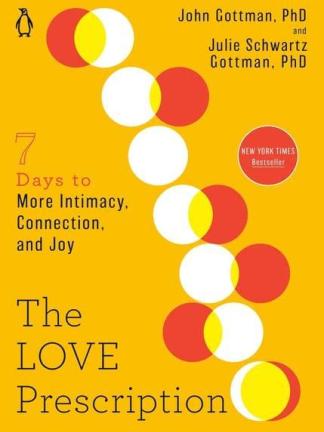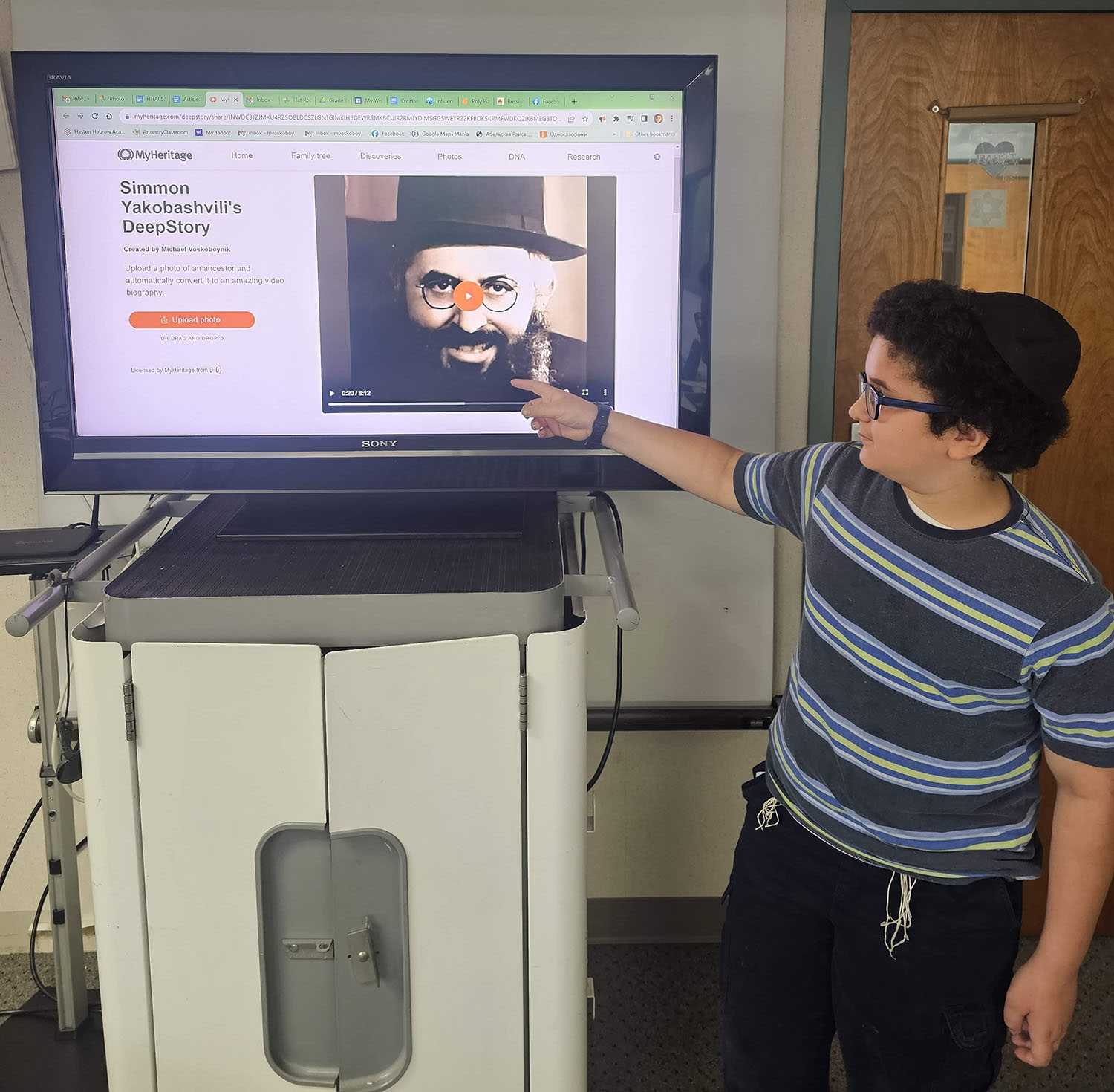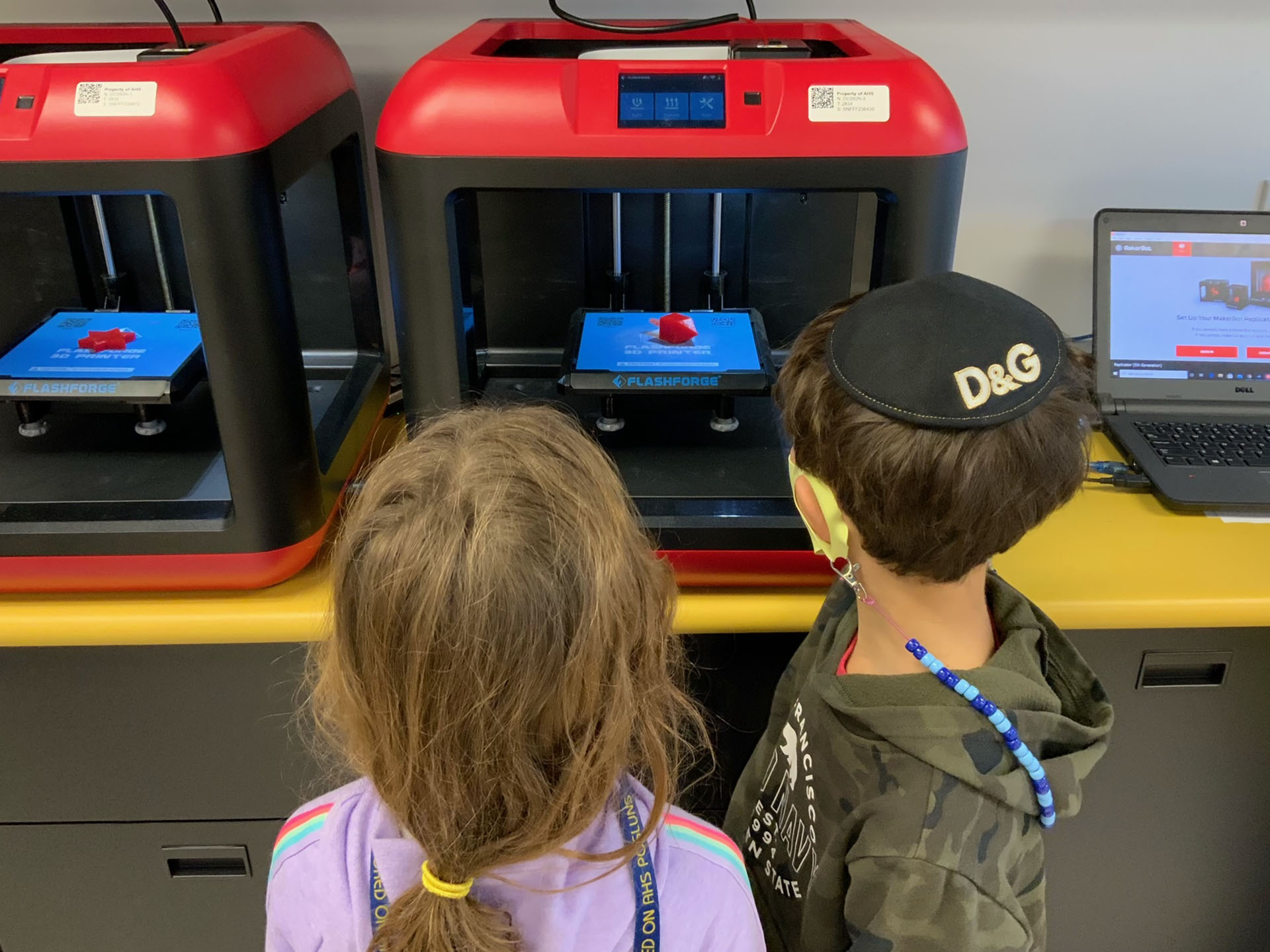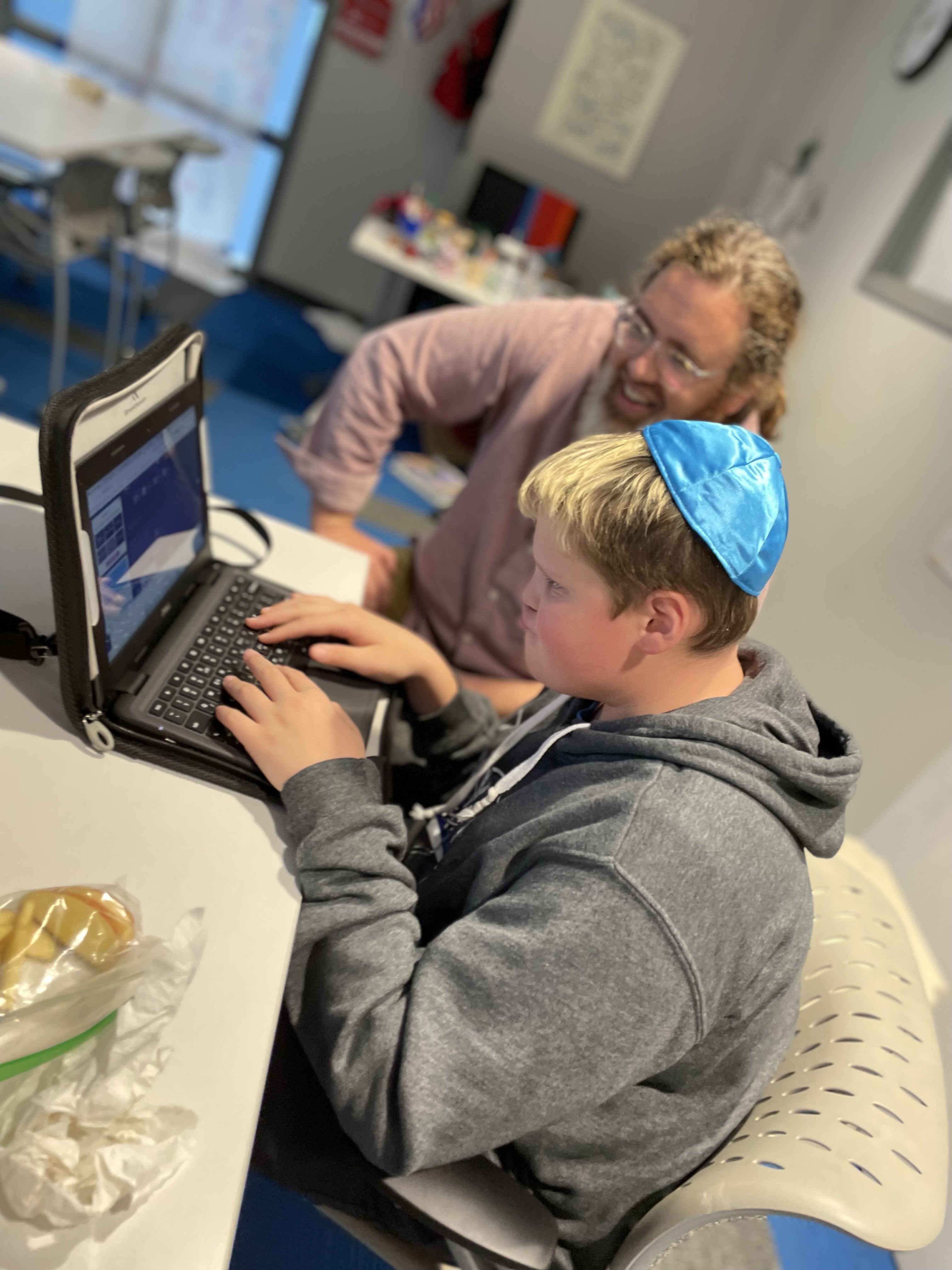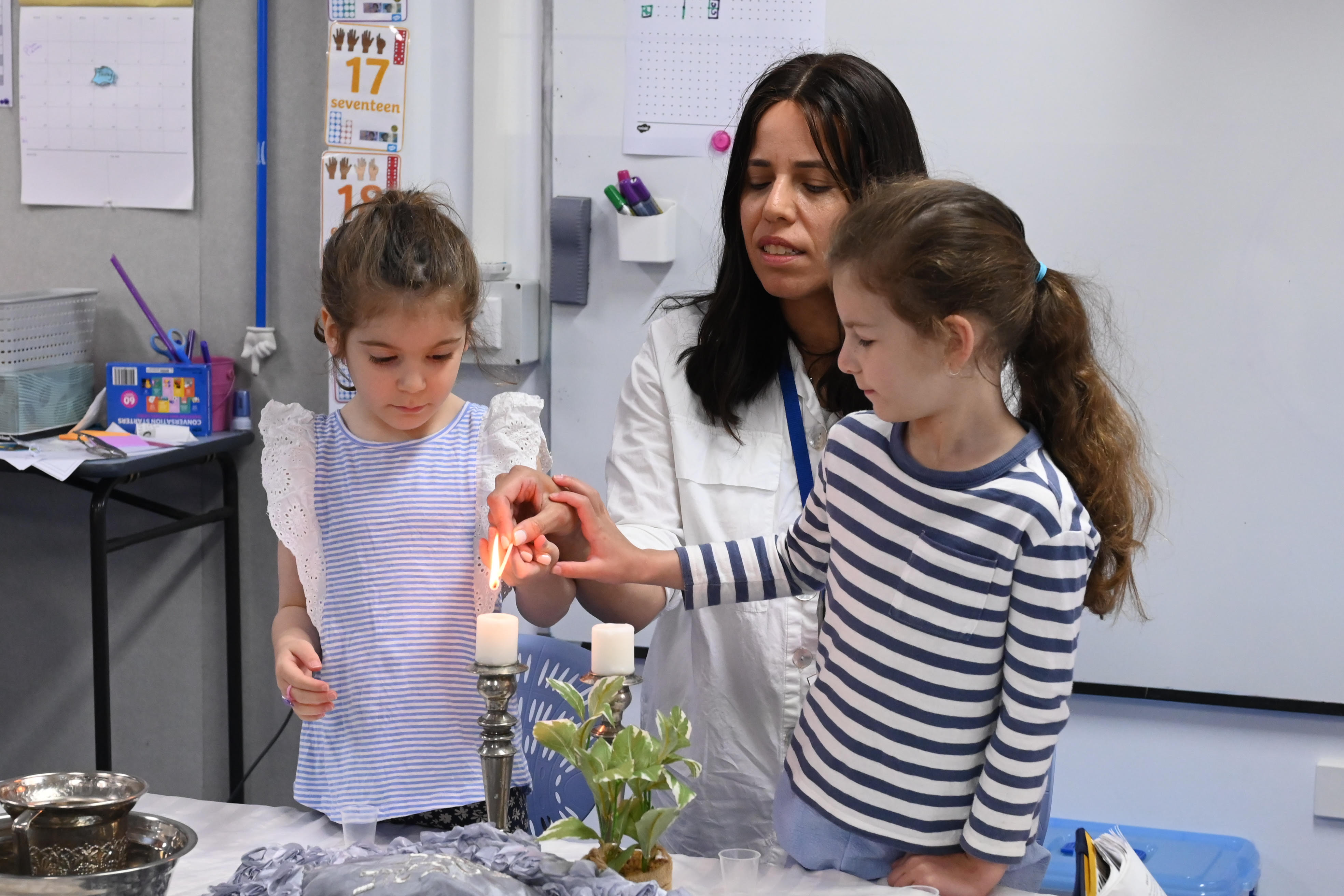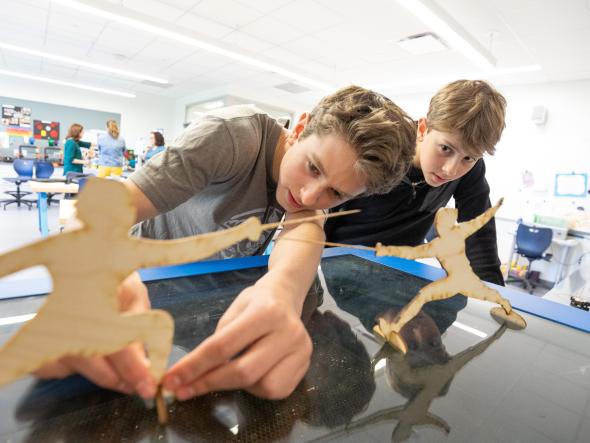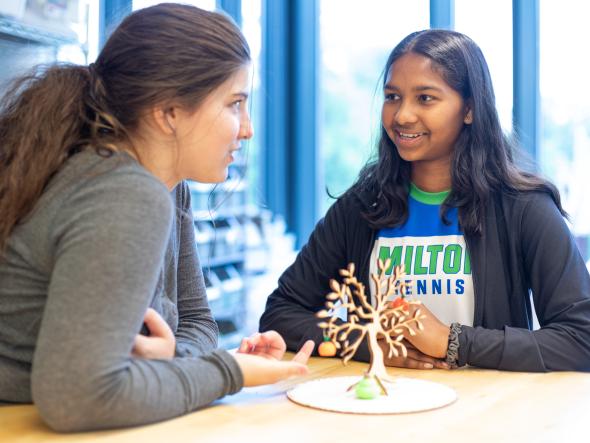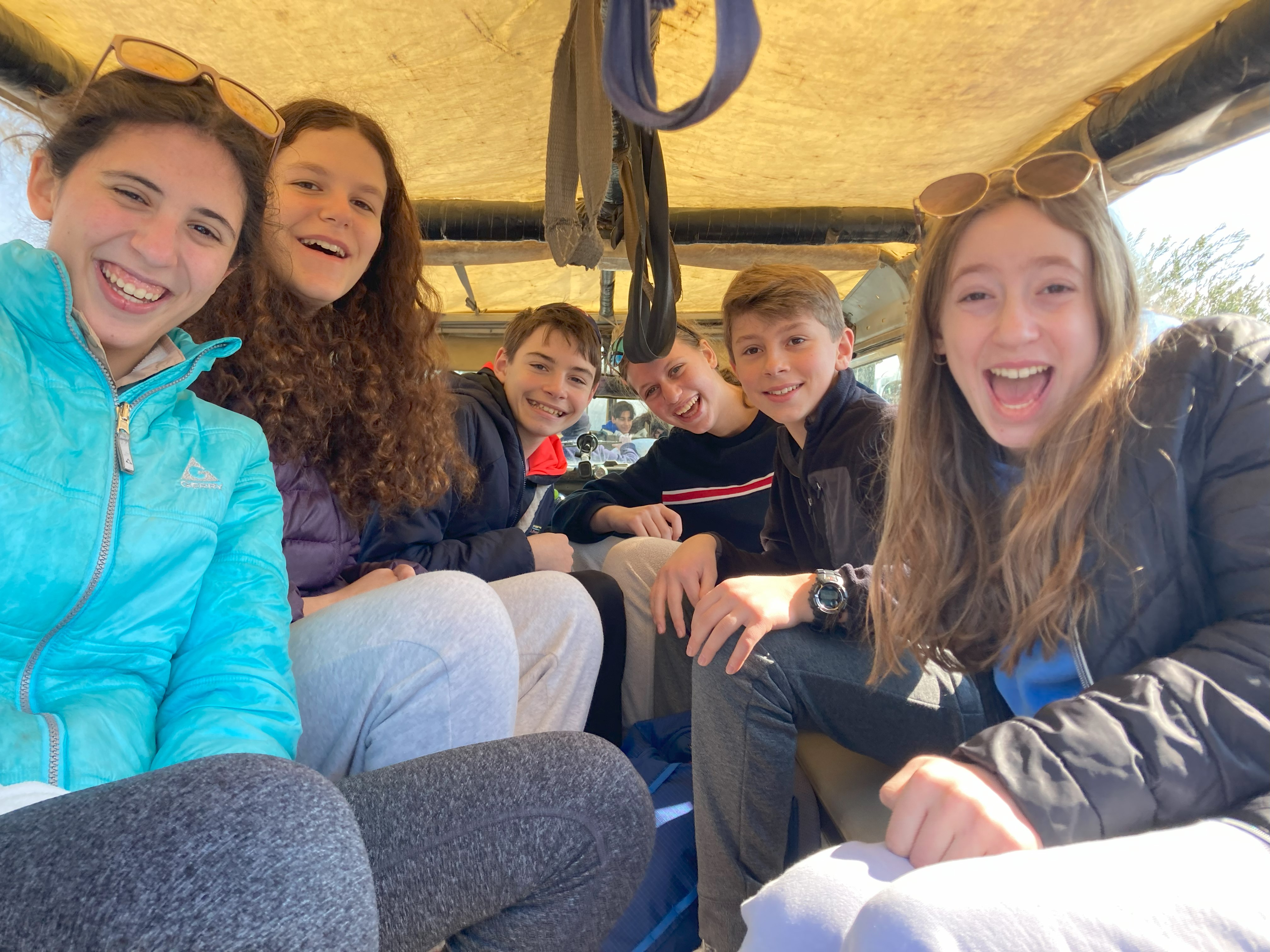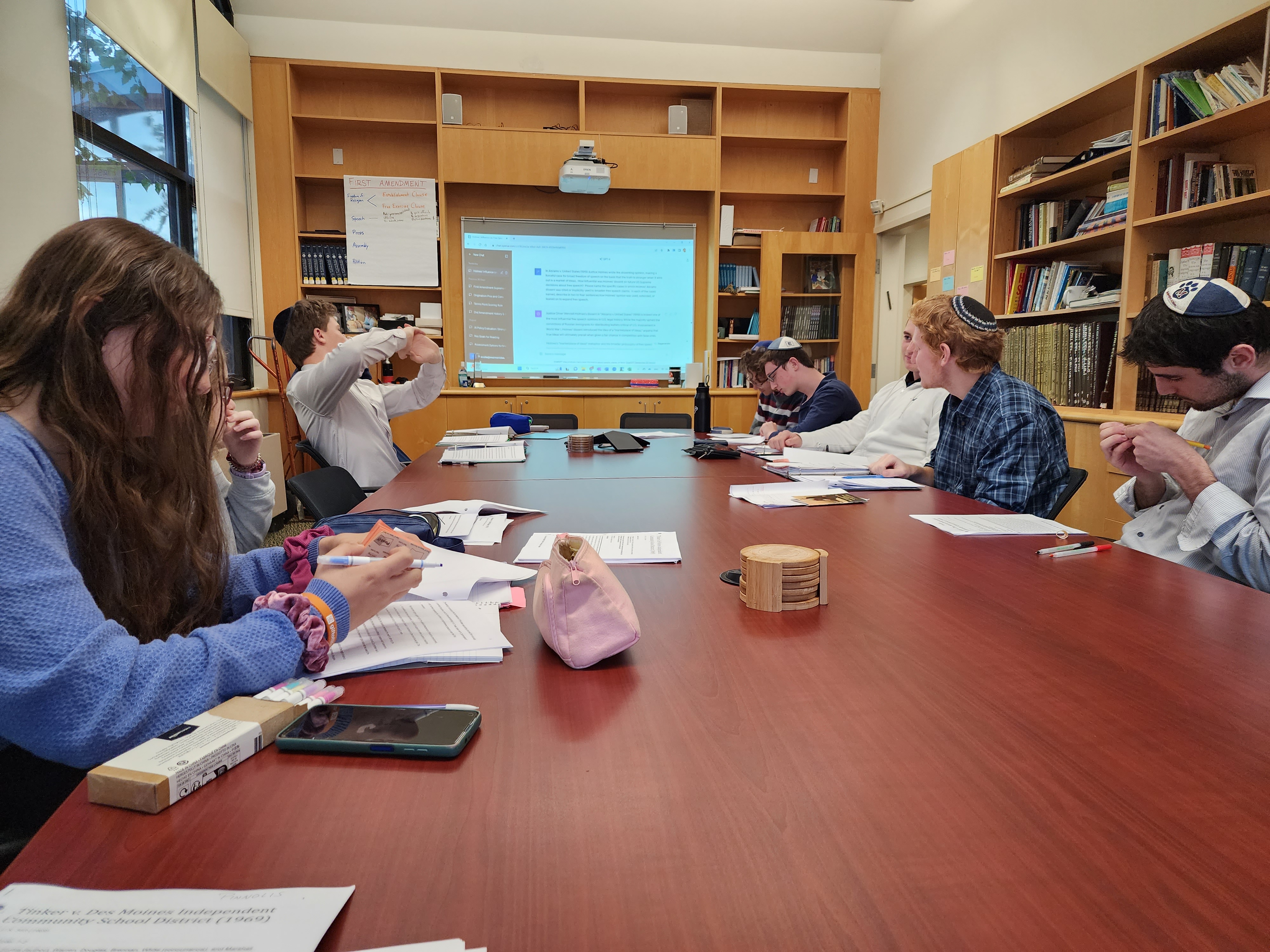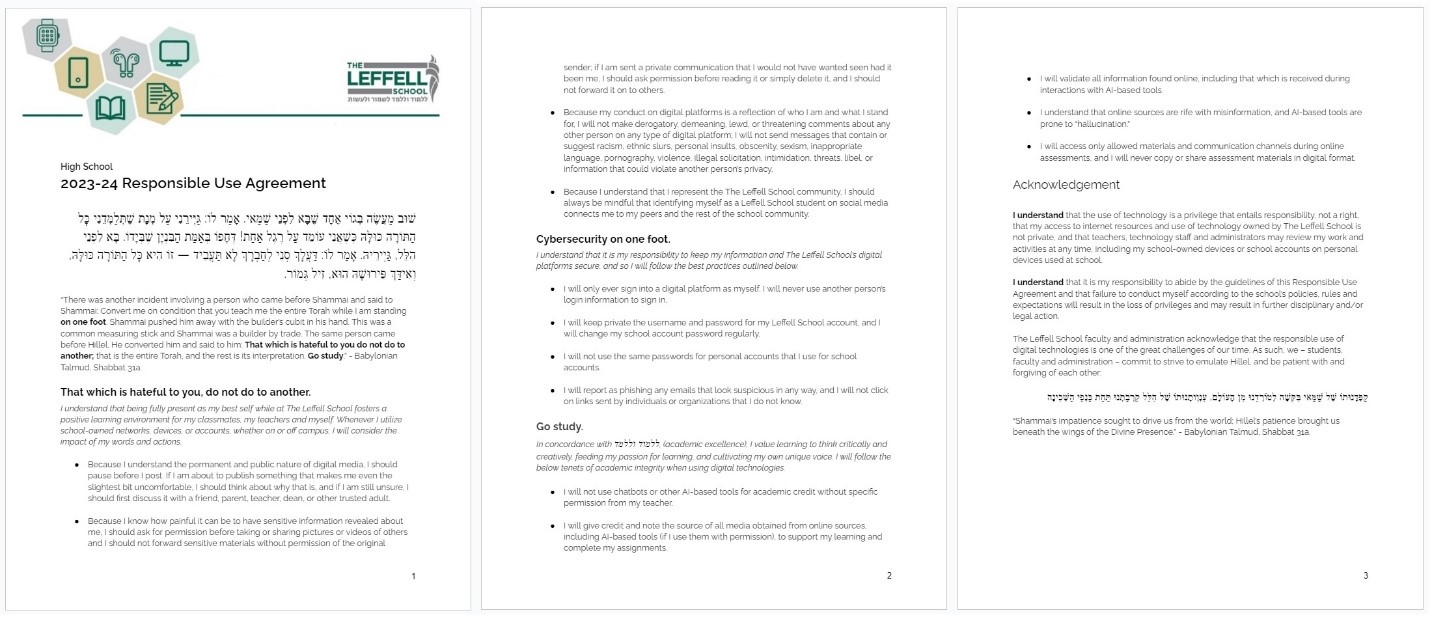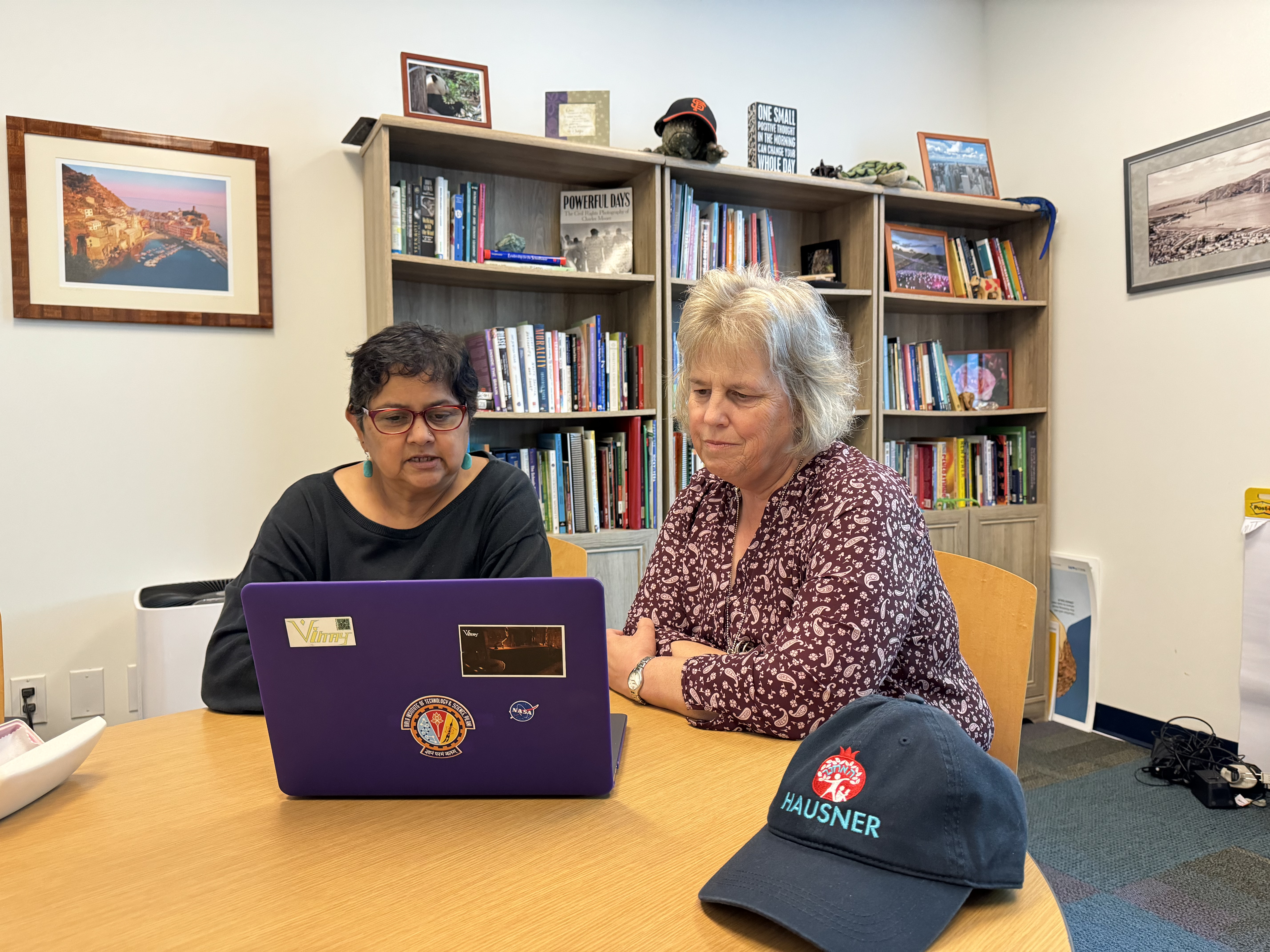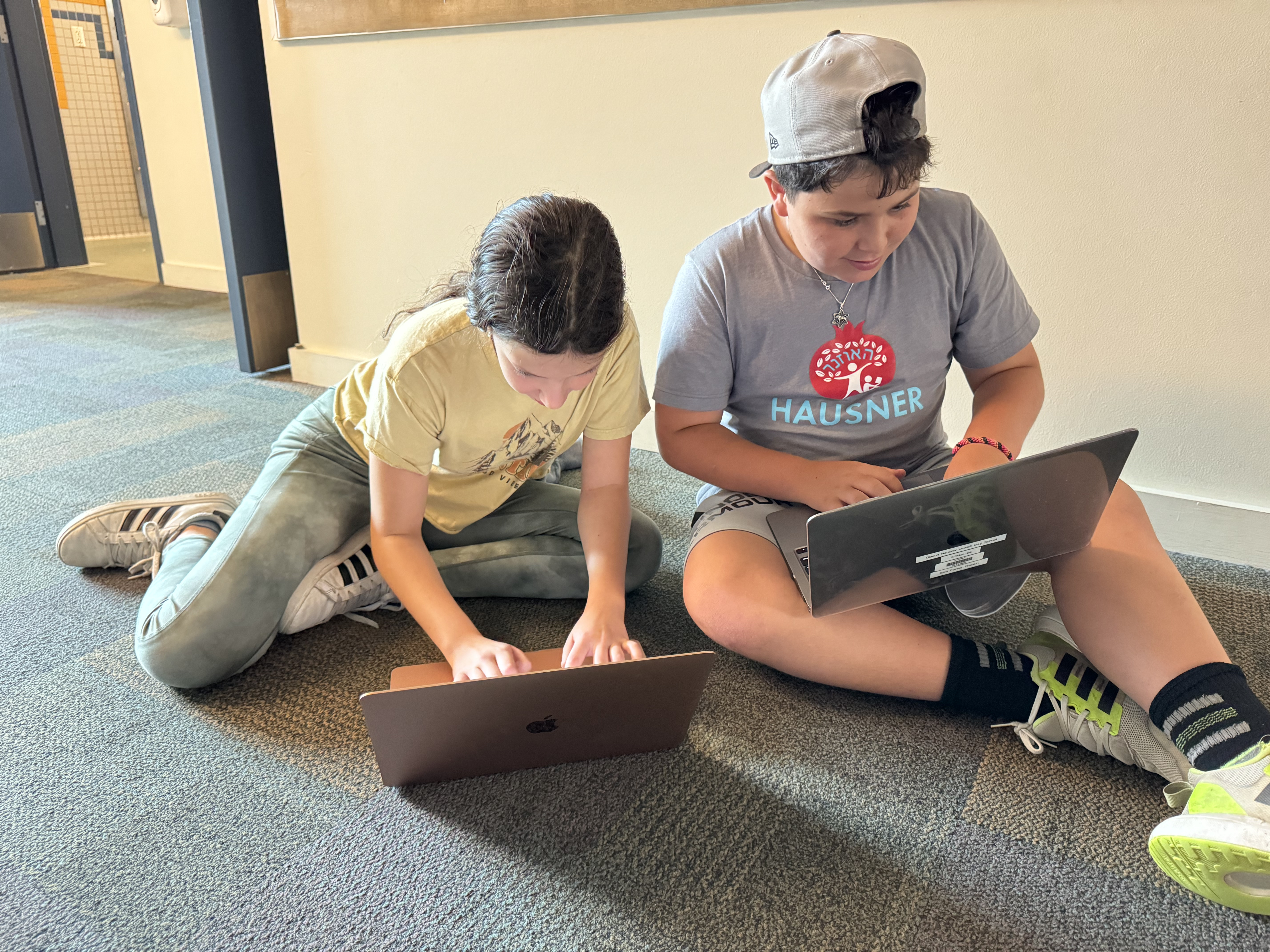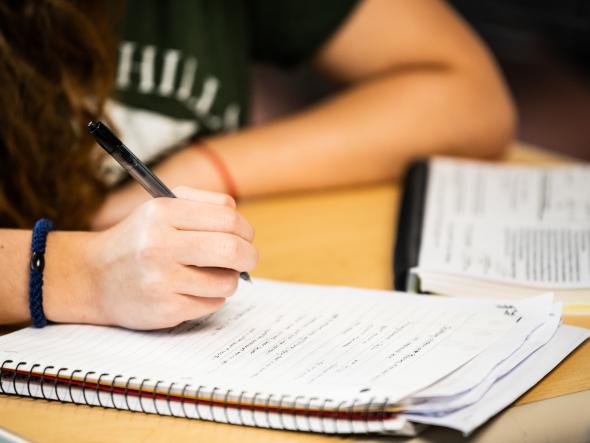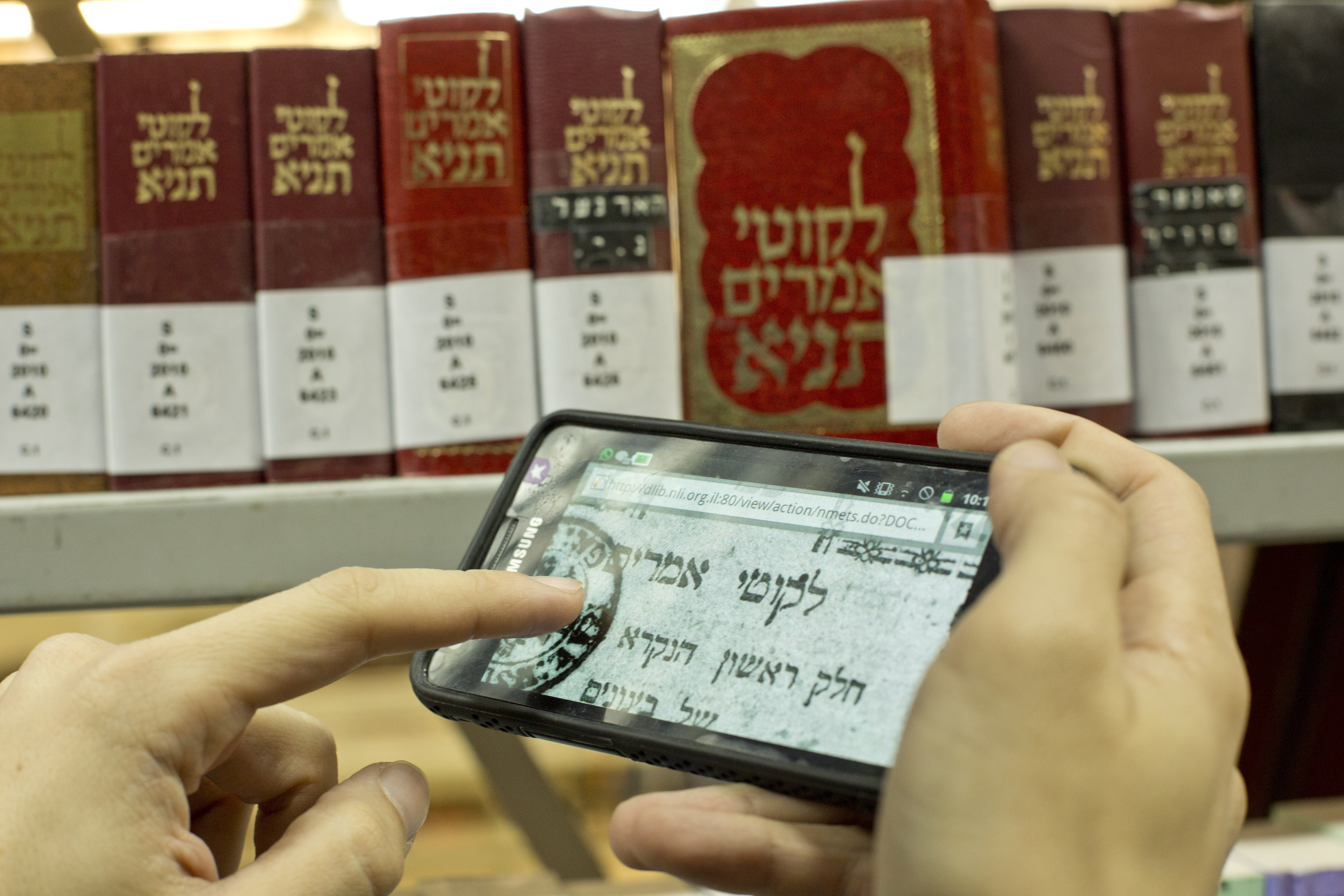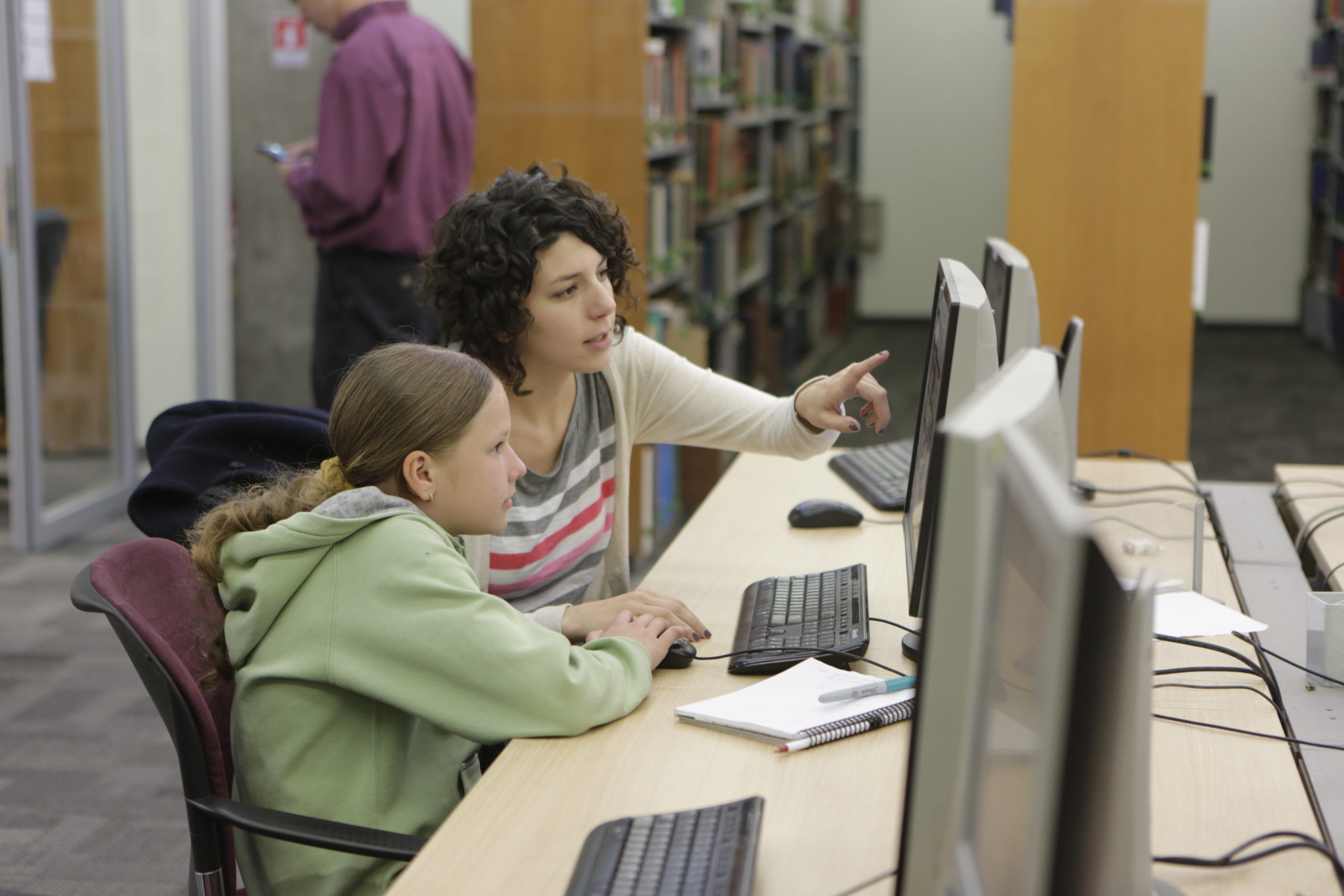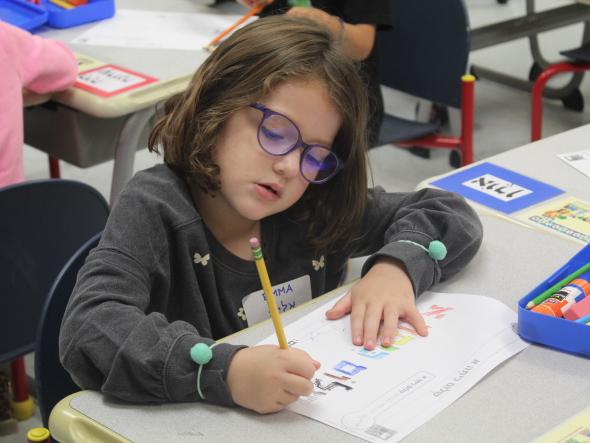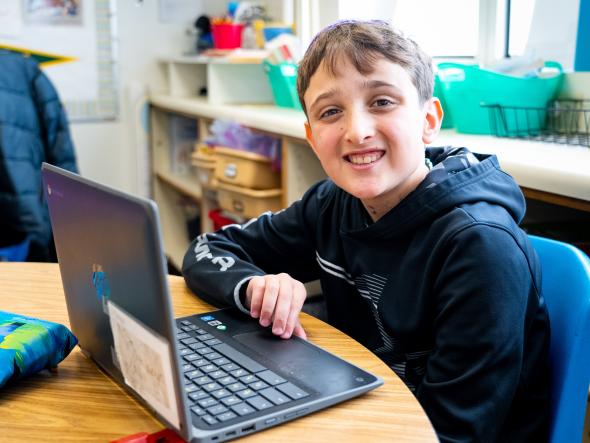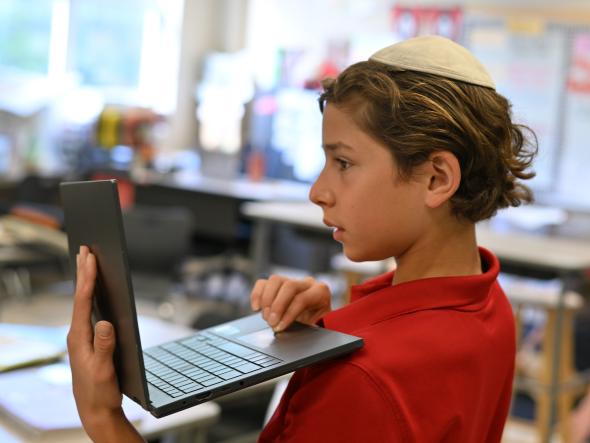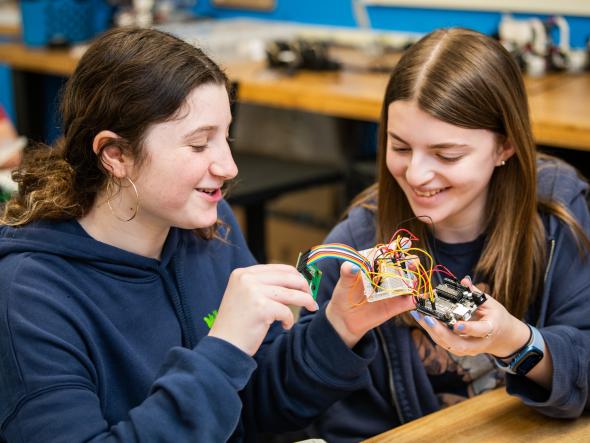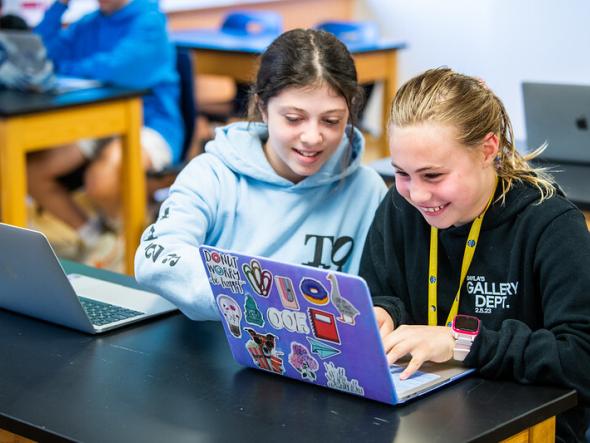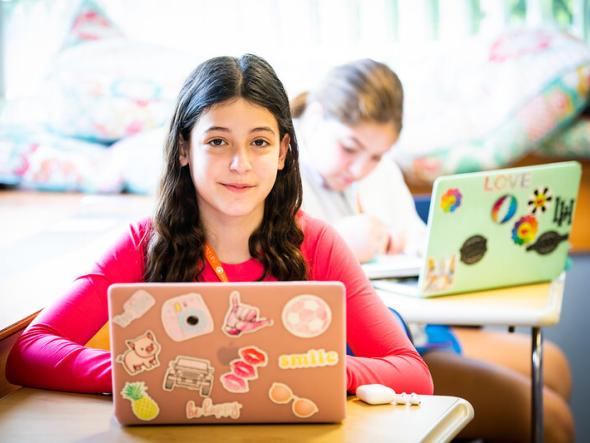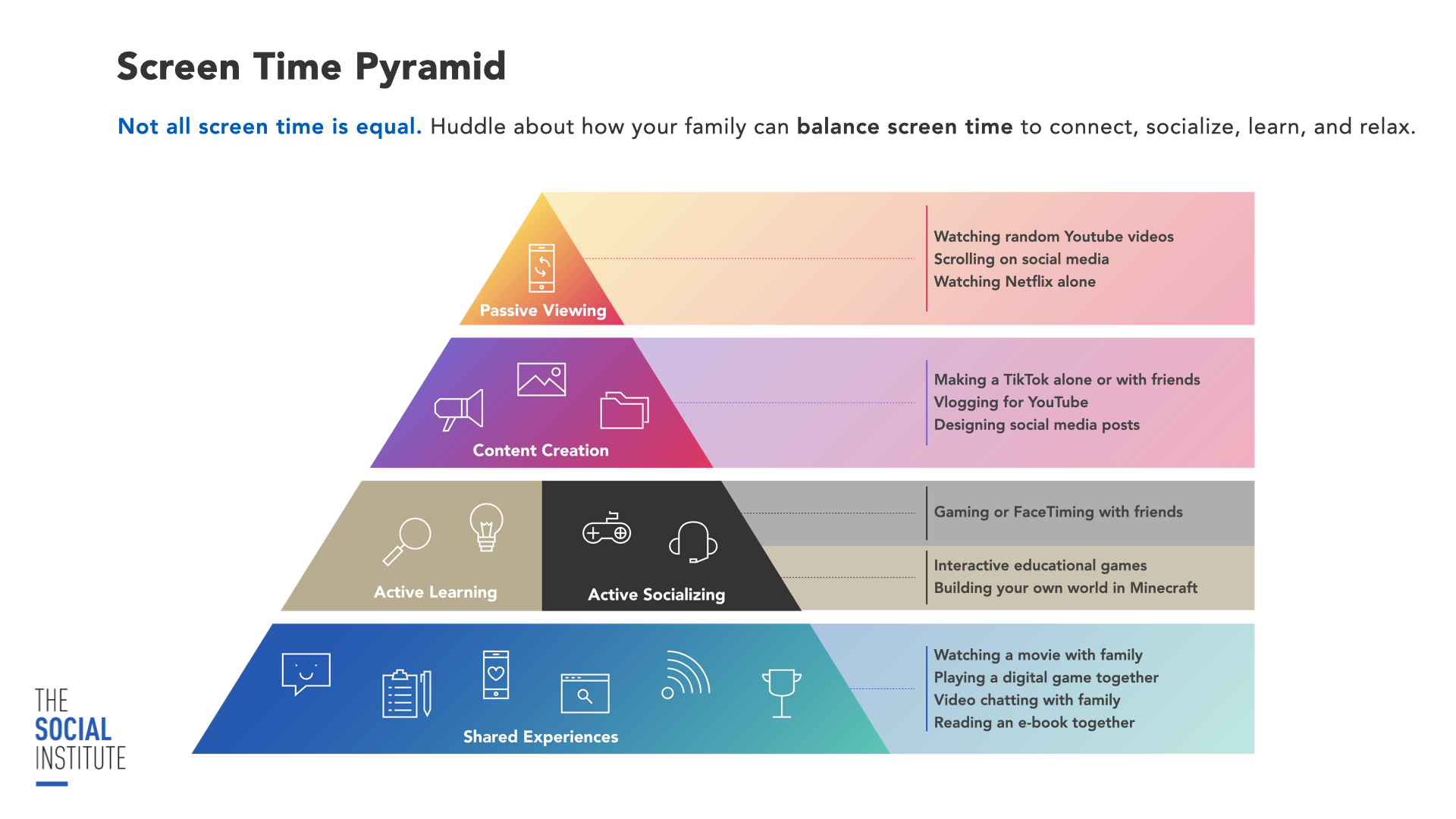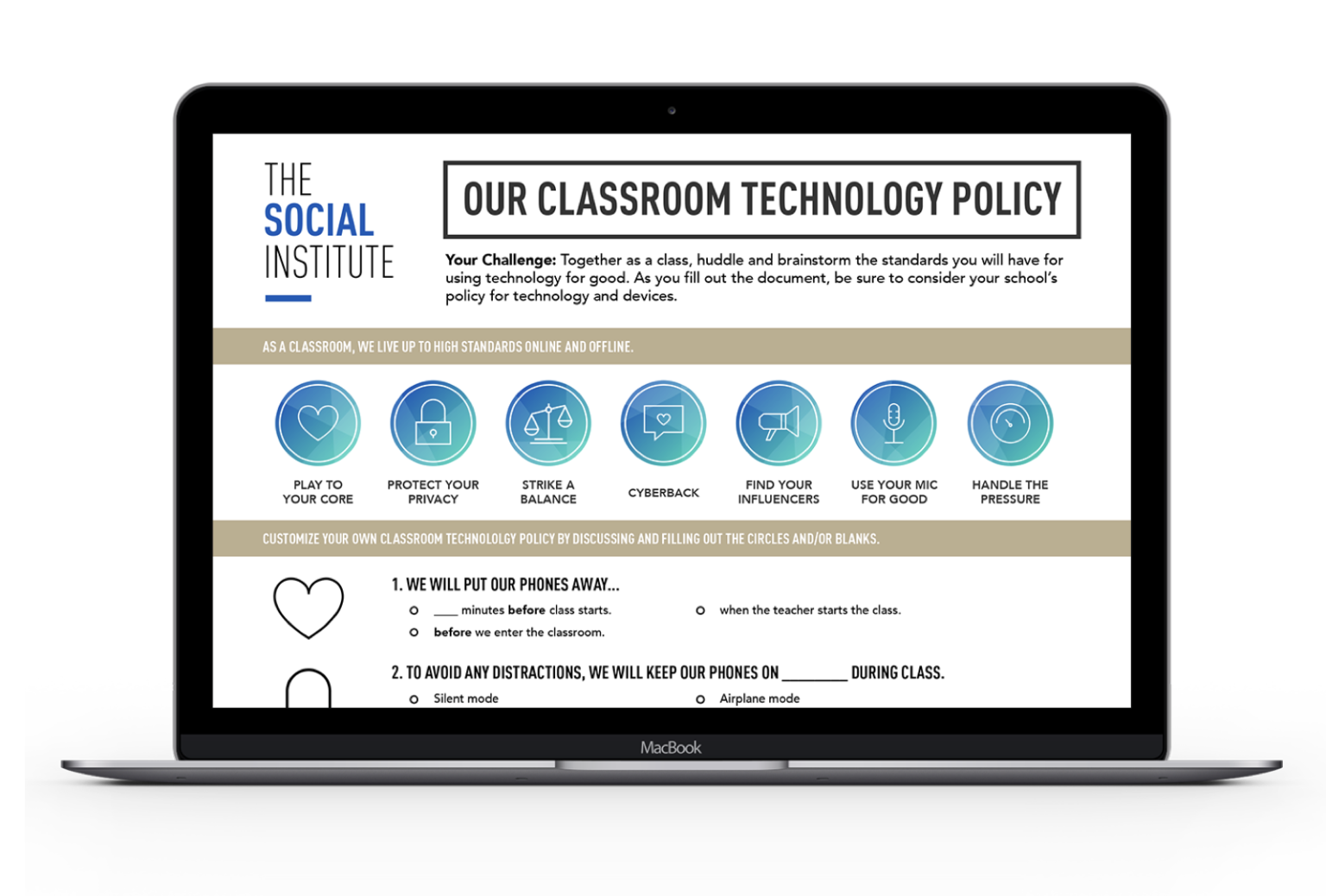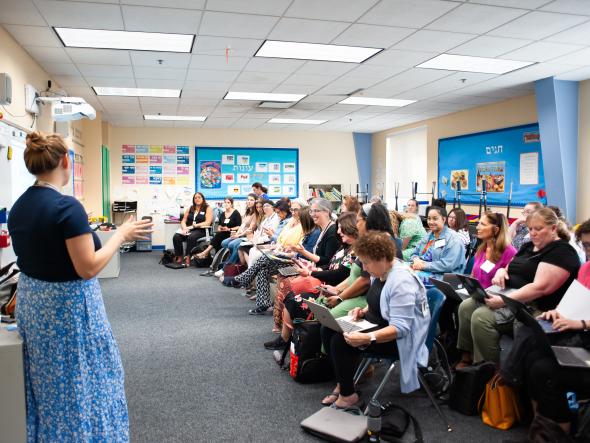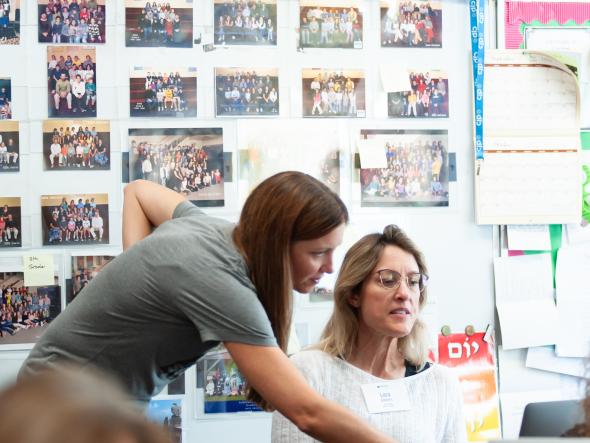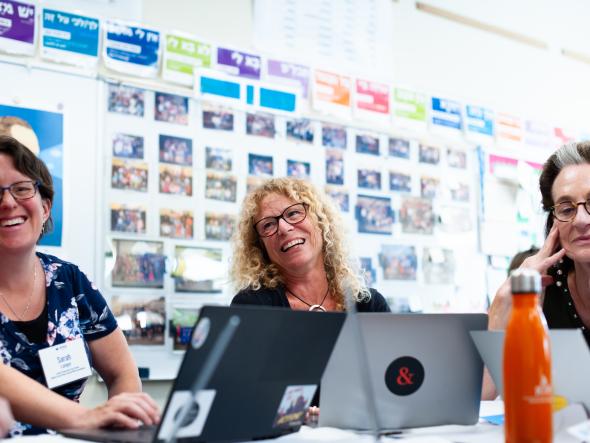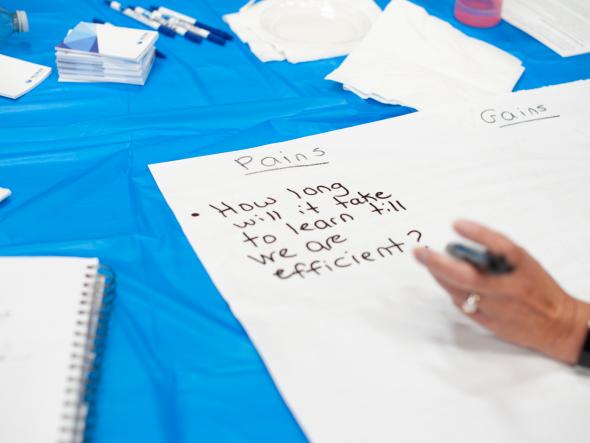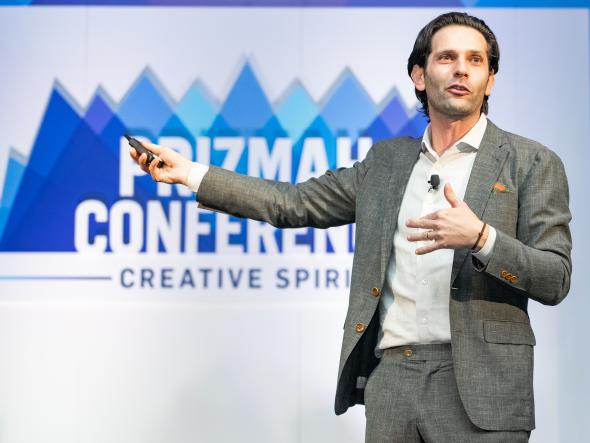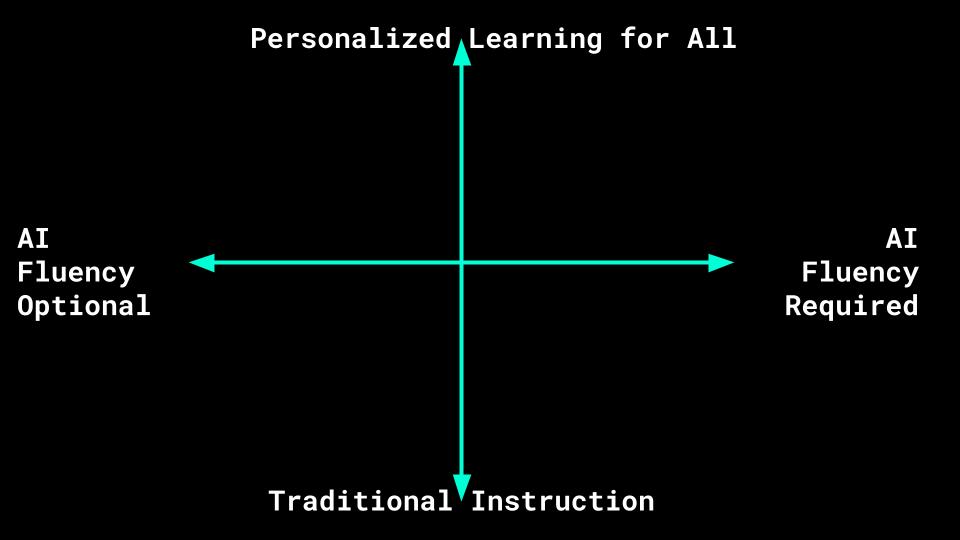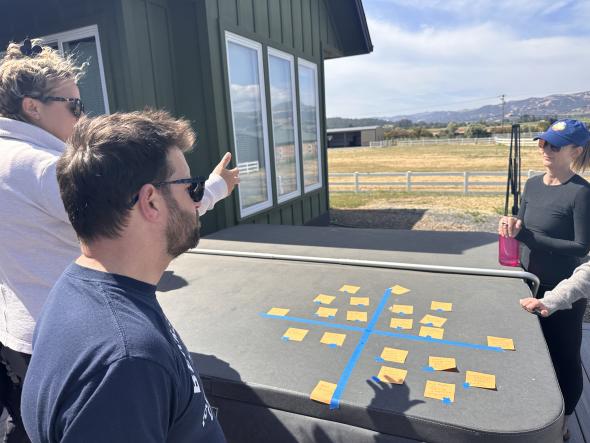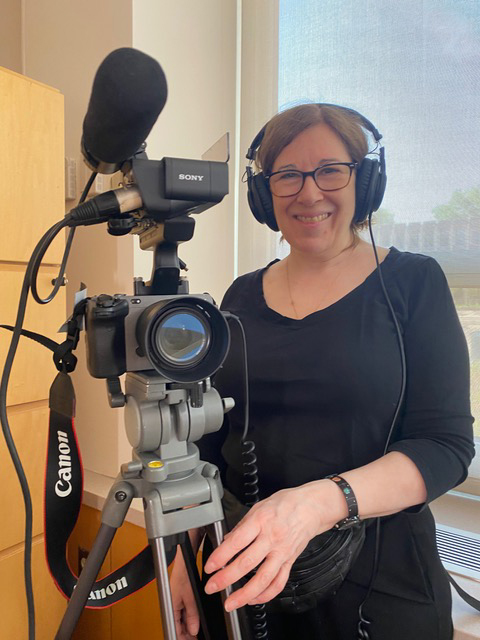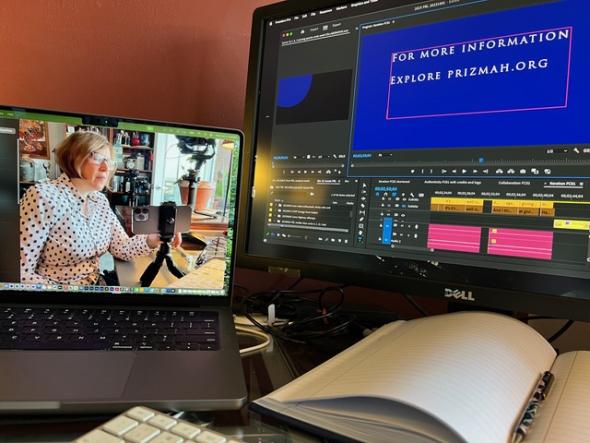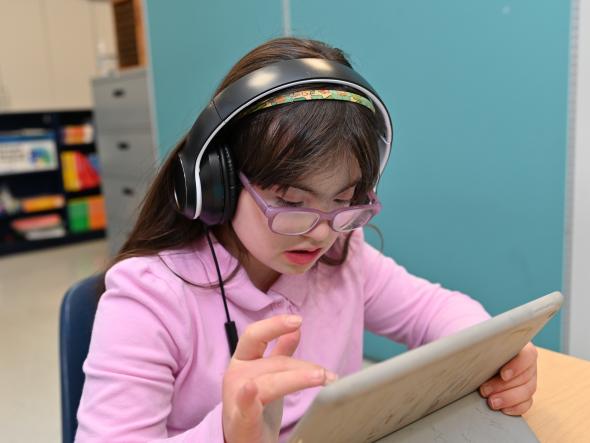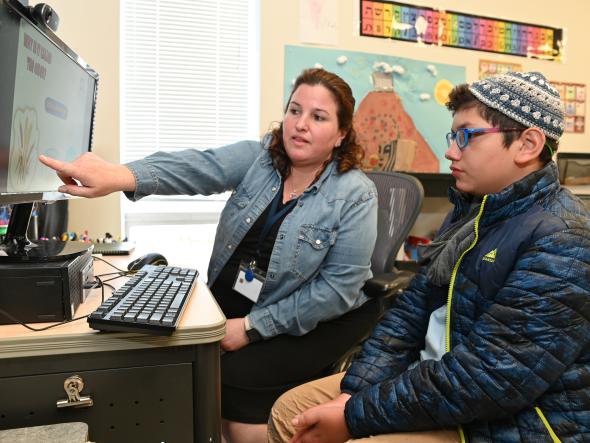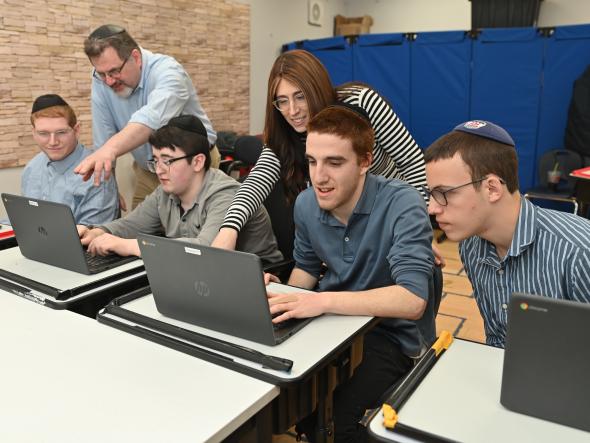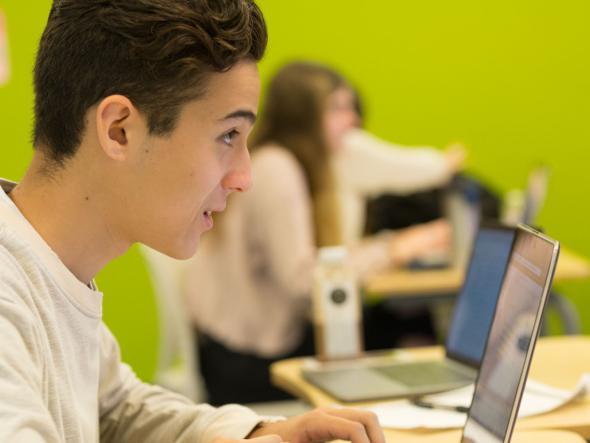When school leaders or board presidents discuss the challenges of new tech, the issues they raise first tend to be about academics: how to cope with the distractions of smartphones in class, or what to do about plagiarism in the age of ChatGPT. If they talk a little longer, the conversation soon turns to social and emotional issues: growing loneliness and anxiety among students and teacher burnout from continuous parental access.
Rarely raised in these discussions, however, is what might be Jewish education's greatest challenge in the digital age: secularization. I don’t mean just a general decline in religious belief and practice, but also the marginalizing of religious priorities and considerations in how we think and act in our everyday lives. As many scholars and social commentators have argued, the ways we use the internet and social media—even in the most closed communities—undermine the very foundations of religious belief, practice and community.
Technology itself isn’t the enemy; in some cases, it strengthens religious commitments and connections, especially for geographically dispersed religious minorities and spiritually curious adolescents in secular homes. However, overwhelmingly the online traffic is in the opposite direction.
Secularization isn’t new, but it has accelerated since the arrival of the smartphone. According to sociologist Jean Twenge, between 2004 and 2016, religious belief among young adults “fell off a cliff.” More recent studies indicate not only that Gen Z is significantly less religious than any preceding generation, but also that their religiosity is inversely proportional to how much time they spend online.
Various theories have been offered to explain connections between social media and secularization. The most compelling of them cite tectonic shifts in how we form identities and belong to groups more generally. In a recent Atlantic article, social psychologist Jonathan Haidt argued that social media have “dissolved the mortar of society” by eroding three pillars on which successful societies are based: social capital, strong institutions and shared stories.
Haidt’s diagnosis echoes Shimon Hatzaddik’s statement in Pirkei Avot (1:2):
עַל שְׁלשָׁה דְבָרִים הָעוֹלָם עוֹמֵד, עַל הַתּוֹרָה וְעַל הָעֲבוֹדָה וְעַל גְּמִילוּת חֲסָדִים
On three things the world stands: on Torah, on service and on acts of lovingkindness.
With a little hermeneutical agility, we can apply these categories to our current predicament. Torah refers to what Haidt calls “shared stories,” a shared narrative about who we are; a sense of mission and shared destiny. Avodah refers to strong institutions, service through communal rituals and respect for traditional sources of authority. Gemilut chasadim refers to social capital, social networks of mutual care and concern, with high levels of trust and a sense of shared community. In the digital age, each of these pillars is under attack.
Torah
It may not be an exaggeration to say that Jews are more divided today than at any time since the fall of the Second Temple. Just as in politics, social media amplify divisions between liberals and conservatives, so too are they amplifying divisions among Jewish communities. The Pew Research Center’s 2020 study of American Jews found that about half of Orthodox Jews in the United States say they have “not much” (23%) or “nothing at all” (26%) in common with Jews in the Reform movement. The feeling is mutual: 6 in 10 Reform Jews say they have not much (39%) or nothing at all (21%) in common with the Orthodox. And that’s just in the United States. When you factor in the growing rift between Jews in Israel and Jews in the Diaspora, and between opposed political factions in Israel, the picture looks even more grim.
These global trends play out locally, too. The world of day schools and synagogues is becoming increasingly fragmented, as formerly big-tent institutions splinter under pressure to cater more exclusively to particular segments of the Jewish population and their versions of committed Jewishness. In 2023, Jews are very far indeed from having a shared narrative about who we are or a sense of collective mission and shared destiny.
Avodah
One of the first casualties of the digital age was trust—trust in general, and trust in institutions in particular. In the age of “deepfake,” it is almost impossible for the untrained to distinguish fabricated documents, photos and videos from genuine ones. Worse still, research indicates that fake stories travel six times faster and further on social media than do factual stories. The net effect is general pollution of the information environment, to which many respond in one of two ways. Some become generally distrustful, presuming all incoming information to be fake until proven credible. Others trust too much in the credibility of sources whose views echo their own.
Religious belief and practice appear to be especially sensitive to these shifts. Twenge cites evidence that Gen Z’s low level of religious affiliation is due in part to their association of religion with views they consider rigid and intolerant. Another recent study identified distrust of religious institutions as a significant factor in Gen Z’s unprecedentedly low levels of religiosity.
Here too, global trends have local corollaries. In my work with school and synagogue boards, heads of school and rabbis, I’ve noticed a dramatic downturn in mutual trust since Covid. This expresses itself in various ways, from micromanagement and reduced transparency to growing impatience, in which trigger-happy boards are readier to fire and frustrated professionals readier to quit. It’s as if Jewish professionals who used to be seen as trusted authority figures are increasingly treated as disposable commodities that you can order online and return to vendor if unhappy with your purchase.
Gemilut Chasadim
While some effects of social media on young users are still contested, their detrimental effects on mental health have been confirmed by study after study. And young people’s risk of such mental illness rises in proportion to the amount of time they spend on social media.
These effects have been exacerbated by two years of lockdown, in which almost all communication with peers was conducted online. And it’s not just kids’ internal emotional life that has been affected; their ability to interact socially with others has similarly declined. They are more withdrawn, more prone to aggression and frustrated outbursts when faced with needs or points of view counter to their own. The US Surgeon General has declared a “loneliness epidemic” and recently issued an advisory that included a call to schools to teach social skills as part of a national effort to address it.
Giving and volunteering to ensure the upkeep of community institutions are also in decline. Boards struggle to recruit younger members. Families with a degree of financial security that led their parents’ generation to contribute beyond the cost of tuition to fund scholarships for families of lesser means are increasingly comfortable seeking financial aid themselves.
We live, in short, in an age of limited connectivity. We’re trying to educate for belief, belonging and commitment in an environment that’s increasingly inhospitable to them.
What Can We Do?
The first thing we can do is to bring to the fore the religious challenges of the digital age. It’s tempting to focus on generic problems such as smartphones in class or anxious students. Not just because they’re easier to address but also because the adjustments they entail are tactical and don’t require us to fundamentally rethink our vision and strategy. This temptation must be resisted.
Second, instead of focusing on how to limit intrusions by new tech on existing educational goals and practices, we can flip the script and ask ourselves the much tougher question: What do we want kids to be doing instead of being on their smartphones? And even more importantly, why? What kinds of Jews are we trying to raise here? And how are we preparing them for lives of religious meaning while also carrying smartphones in their pockets?
Third, in the spirit of middah keneged middah, measure for measure, we can work to rebuild each of Shimon Hatzaddik’s pillars, without which religious life cannot thrive. With a little creativity, we can even do so in ways that strengthen more than one pillar at a time.
For example, by building consensus among parents and teachers around tough, thoughtful policies about smartphone use and backing each other to implement them, we can both strengthen our institutions (Avodah) and build trust and social capital (Gemilut chasadim). Compelling arguments have been made for eliminating smartphones completely from schools, and restricting children to “dumb phones” until high school. But more important than which smartphone policy is adopted is that the community be united in formulating and implementing it. Because of the immense peer pressure with which any such policy must contend, no one family or educator can do this on their own.
To strengthen the pillar of Torah, we have to do a better job of articulating our own “Why?” In the face of kids’ alienation from religious commitments and spiritual purpose, we need a compelling articulation of why these matter to us now, more than ever.
To strengthen the pillar of Avodah, we need to invest in rebuilding trust between educators, administrators, lay leaders and parents. Educational leaders need to assert their own authority more boldly, while also bolstering the authority of others. Communities would benefit from backing their board presidents and heads of school to acquire the tools needed to face these growing challenges and to protect them from mob justice online.
To strengthen the pillar of Gemilut chasadim, we need to give kids opportunities to experience with us habits of social interaction that previous generations acquired naturally at home, in strong community institutions and on the street. In the face of increasing self-obsession, we need to draw kids out of themselves by getting them to help those whose needs differ from their own. Studies show that the interventions that reduce loneliness most effectively are those in which the lonely help others. Instead of treating children as if their individual wellbeing comes above all other considerations, we can expand opportunities for peer-led activities in which they take greater collective responsibility.
Such actions might not sound as if they have the power to draw kids away from TikTok or infuse them with spiritual purpose. But studies indicate that the same kinds of boundary-setting, warmth and high demands that characterize authoritative parenting (and, for that matter, strong religious communities) and which reduce risk of antisocial and addictive behavior offline similarly mitigate such behavior online.
More generally, however, the approaches outlined above offer initial, practical ways to reconceive the challenges posed to Jewish education by an increasingly individualized and secularized digital world. As with all challenges, the disconnections of our age are also an opportunity to rethink our goals and pursue them with new energy. To paraphrase another mishnah in Pirkei Avot, if we won’t do it, who will? And if not now, when?
Since this article was written, tragic events in Israel have highlighted additional challenges posed to Jewish educators by our over-networked and under-connected age. To address them in depth would require a different article entirely, or even a series of articles. However, as Rabbi Tarfon insisted (Pirkei Avot, 2:16), our duty to act is independent of our ability to complete the task. Below, therefore, are some preliminary thoughts about specific challenges of social media during wartime and ways we might address them.
Among the first casualties of any war is truth. Propaganda and disinformation are weapons of psychological warfare, deployed deliberately to confuse, terrorize and dishearten. The volume of disinformation and the speed with which it is being disseminated online in the current war is beyond anything experienced in any previous conflict.
I am referring here not only to outright lies, misrepresentations and mealy-mouthed “contextualizing” by Israel’s enemies but also to materials that, regardless of the intentions of those who share them, foment panic and despair. These include gory Go-Pro videos shared proudly by Hamas terrorists on TikTok and Facebook of murdered, captured and abused Jews; clips on YouTube of Jewish students on American campuses being attacked by pro-Palestinian demonstrators; and rumors spread on WhatsApp of an international day of Jihad targetting Jewish schools.
Some argue that it is our duty not only to view such materials ourselves but also to share them as widely as possible. I understand the rationale: Evil cannot be fought by ignoring it and we should not turn away from distressing truths. But I could not disagree more with the practical advice, especially as it applies to students, teachers and parents at Jewish day schools. Our primary concern at this time should be to strengthen the resolve and resilience of our communities and to shield our children not only from threats to their physical security but also to their psychological wellbeing and cultural identity.
In practice, this requires educators and parents to take even more seriously than usual their gatekeeper role with respect to social media. Whatever your school or community policies were regarding smartphones and social media prior to the war, now is the time to review them and tighten their implementation. In particular, administrators should consider introducing tougher standards of moderation on staff and parent WhatsApp groups to minimize scaremongering via the spread of baseless rumors or shocking video clips. Jewish day schools that shut down on Friday 13 October because of one such rumor contributed unintentionally to Hamas’s goal of terrorizing Jewish communities worldwide. This could have been prevented by administrators better-informed about how to assess online information.
Like any crisis, this war is also a source of opportunity. On the face of it, day school students have more reasons to feel anxious and lonely today than they did just a few short weeks ago. Indeed, exposure to the world’s indifference to Jewish suffering may well have increased their sense of social isolation.
However, as I argued earlier, one of the most effective ways to combat such feelings is to provide young people with opportunities to take responsibility for helping those in greater need than themselves. Whether it is raising money for orphaned children, campaigning for the release of hostages, writing personal letters of support to soldiers and displaced families, there are now - tragically - endless opportunities for day school students to set their personal worries aside and focus on boosting the morale of Jews on the frontline and helping to rebuild shattered families and communities.
In short, these are not times to indulge our or our children’s anxieties, but rather to combat them directly by taking more responsibility for ourselves and others.




